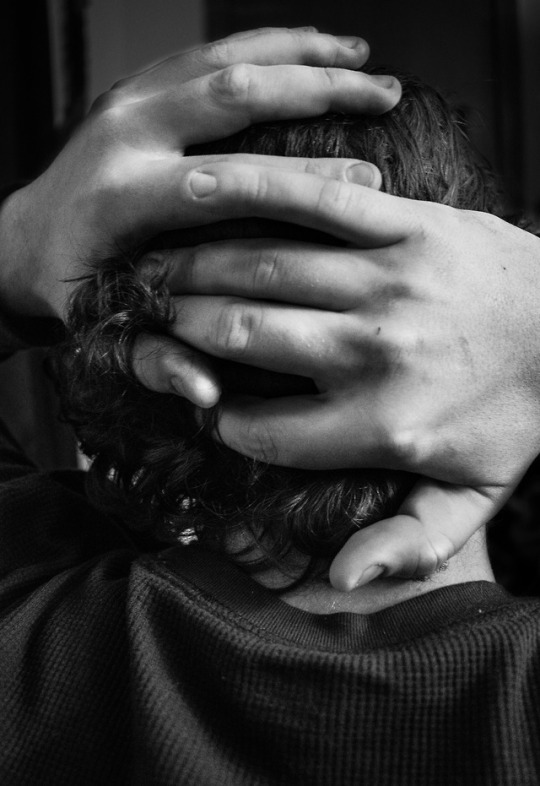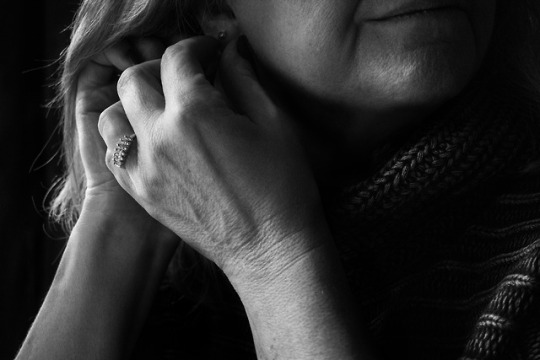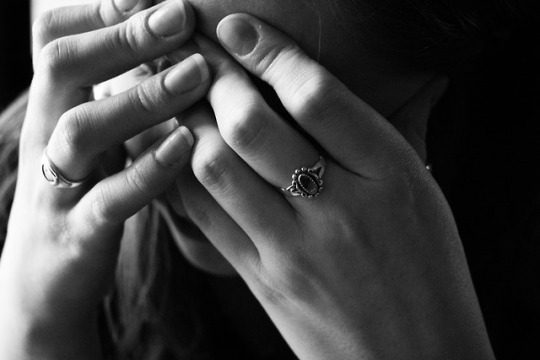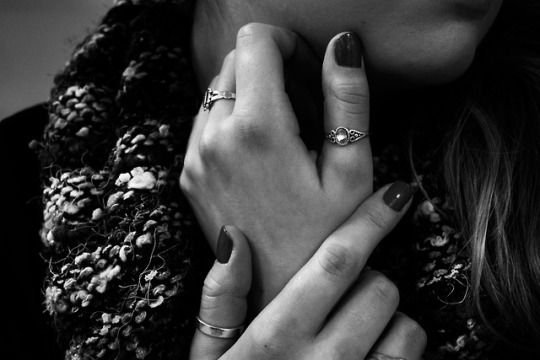Text
Like Life
Review
In addition to visiting the Brooklyn Museum of Art I also went to the Met Breuer which is a solely contemporary building that is an extension off the Metropolitan Museum of Art. This exhibition was called Like Life: Sculpture, Color, and Body. This exhibit examines the traditional and contemporary aesthetics of depicting the human body. It is particularly interested with the idealized realistic imagery that engages the audience and how the sculpted body can be replicated to mimic the living presence of the human body. It juxtaposes classical sculpture next to modern artist renditions that use modern techniques. This exhibit also consists of one hundred and twenty artworks on loan from various national and international museums and private collections. This showcase asks the audience the question, “How perfectly should figurative sculpture resemble the body?” Traditionally, idealized representations of classical white marble sculptures allure audiences by placing the figure outside of time, space and personal or cultural experience. In contrast this show places sculptures from different eras in the same room to blur the distinction between the real and the copy. More contemporary design choices include using wax like material, using human hair, teeth, and clothes and the most important component in the introduction of color to produce stunning flesh tones. These type of realistic artworks can be unsettling and forces the audience to reconsider how we truly see one another.
Like Life was also divided into different sections used to direct the narrative of the exhibition. You enter the space and start in “The Presumptions of White” category, which consists of mostly classical renaissance marble sculpture that are predominately white. This white atheistic corresponds to the concept of moral purity and the strong ties to religion during this time. By the 1500’s some artists began experimenting with using paint to increase the naturalism and make skin tones to emulate the realistic qualities of the figures. This section makes us revisit the beginnings of body sculptures and the classical renderings of the divine human in order to combine these ideas with more natural human aesthetic to create a new approach of depicting the body.
The next section is called “Likeness” which is best describes as art that captures the essence of the spirit. These artworks begin to explore deeper into what makes a portrait successful, it goes beyond the physical replication of the figure and starts to capture the individual’s attitude to make them recognizable. These artists’ experiments with using cast molds in order to directly translate the individual’s life into the artwork. Housewife by Duane Hanson. This sculpture accurately represents every aspect of the individual. She sits with curlers in her hair, reading a magazine, while dragging on a cigarette. Using a cast he is able to take all of the small details, wrinkles, and attributes that make the individual unique. His display uses accurate clothing and furniture from the time period to place the women in her corresponding role. Hanson is able to depict the women’s reality, her attitude, and an extremely realistic representation. The art here begins to create a more complex relationship between the body, the artist and the viewer.
“Figuring Flesh” focuses on the thin layer of the human exoskeleton that keeps the body in place. The skin keeps a record of the body’s experiences throughout life. Artists in this section begin to go further than just the surface and take into consideration the underlying structures and layers of the human form as well as the multicolored aspect of skin tones and muscles. Here we start to see the emergence of the intersection of art and science. Art no longer has to be ideal representations but should also take into consideration anatomical correctness to accurately portray realism.
Artists also begin to incorporate environment when creating a figure’s reality. Clothing has an essential role in the presence of human experience. It is also an identifying characteristic of a person’s personality, that can accurately represent the time period in which they lived, what they do for a living, their interests, and the choices that they make. In this aspect the sculptures can be more effective in expressing the trueness of identity.
“Proxy figures” takes on an entirely new dimension to depicting the accuracy of the body. In contrast to the traditional pedestal like displays or stagnant still sculptures this section. These artificial sculptress incorporate moveable of flexible limbs. They as movement to represent the human experience. Some of these artworks include dolls, marionettes, or mannequins. The artists whose work falls in this section tends possibility of pliability that expresses the intricate human condition of movement.
The last section is “Desire for Life”. These artwork consider the undeniable desire to make human sculpture as real as possible. When the line between the real and the fake is blurred the boundaries of what art is used for also blurs. When the sculptures become animate and begin to feel and sound and act like real humans there can be and inspiration that creates more emotional reactions. This can them produce a real reaction of love, mourning, affection and even erotica. These sculpted bodies are meant to entice the viewer, even seduce them, challenging the audience to make the distinction between aesthetic beauty and lust.
0 notes
Text
Radical Women
Review
Radical Women: Latin American Art 1965-1985 was located at the Brooklyn Museum of Art. This exhibit is the first to feature radical and feminist art practices both in Latin America and among Latina artists in the United States. It showcases approximately one hundred and twenty female Latin American artists from fifteen countries during a key period of American history and the development of contemporary art. These artists produced art meant to stand up for female existence by re-appropriating the world around them. They fought against mainstream stereotypes and empowered women everywhere to do the same. The decades that this exhibit focuses on was a time of repression. Most of the countries were affected by war, poverty, dictatorship, sexism, and persecution based on social and political views. Although most of these artists did not identify as feminists, their work embodied the feminist empowerment movements that redefined women in society. Many of the artwork reflects the artists’ participation in Civil Rights, Antiwar, Gay rights, Disability Rights, and Feminist rallies, both in and out of the United States
The artists used various mediums from photography, painting, sculpture, found objects, videos, and more to support the overarching theme of the politicized body. The art works follows this theme by making art that falls under certain categories including: self-portrait, social places, feminism, resistance and fear, mapping the body, the erotic, the power of words, body landscape, and the performing body. These categories help reveal the shared concerns through the shared experience of the body. Within this exhibit, the art work questions how we see, and talk about the human experience. Upon entering the exhibit you are faced with a screen that is projecting a video documentation of a Victoria Santa Cruz and a small group of performing activists recording poetry and choreography. The artist recalls her childhood filled with discrimination taking that pain and using it as motivation to embrace her culture and project her pride to the audience. Set place in Peru, she is addressing the black experience in South America, which is often devalued by the dominant cultures of the region. The main phrase throughout the poem is “¿Y qué?” meaning “So what?” which to me is challenging the audience’s perception of why the color of someone’s skin should define them. The performers’ bodies are filled with the beat of the music, unable to keep their emotions contained they clap their hands and dance along to the rhythm. The body is the medium of this artwork, using their voice in combination with expressive movement to spread their message. They use their body in a universal way, connecting us all through music and dance, expressing that their existence is equal to everyone else’s and we can all relate to one another if we look past the skin.
The Radical Women: Latin American Art exhibition was quiet impressive. Firstly, the rooms were lit evenly, bright and open. I felt like I was being invited into the space and accepted into the space. They were able to arrange over one hundred art works, each display complimenting each individual artwork, an adequate amount of space was given to all the pieces within the room and the other works around them were taken into consideration when choosing the specific location of where to display each work. I thought that having the Radical Women exhibit center around The Dinner Party linked the overarching theme throughout all of the work more strongly. This installation is an iconic feminist artwork of the twentieth century during a time of civil rights and suppression. Banquet tables are arranges in a triangle to represent equality seating thirty nine uniquely designed table settings. Each represents a famous woman with a significant role in history, including Cleopatra, Susan B. Anthony and Virginia Wolf. The individual setting consists of their own intricately embroidered table runner with historically specific techniques, a unique fourteen inch china painted plate with a central design inspired by butterflies and vulvar forms, extenuating the idea of female empowerment and the body as a medium of art. The centralized location of this iconic art work sets a tone for the entire exhibition as a stage for female liberation.
I enjoyed this exhibition more than most modern art shows. I appreciated the research that was involved in creating a show that was designed for Latin American women for Latin American women but served as a universal platform for all women to gather.
0 notes
Photo


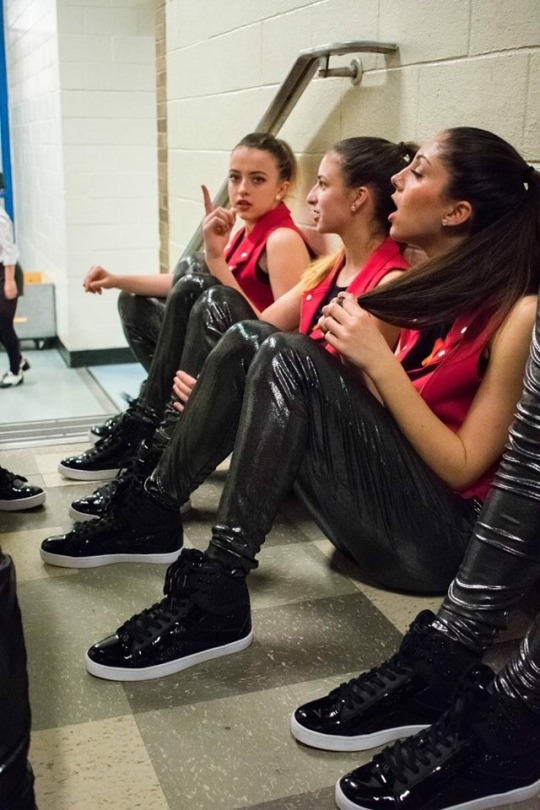

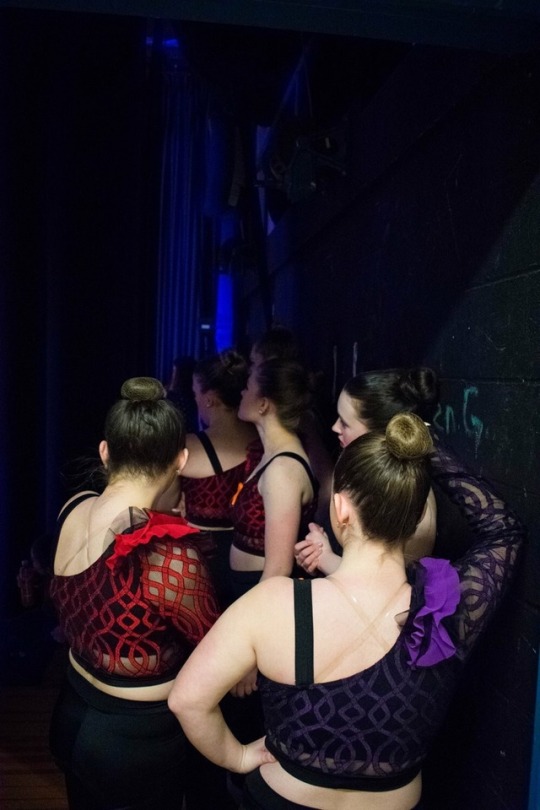
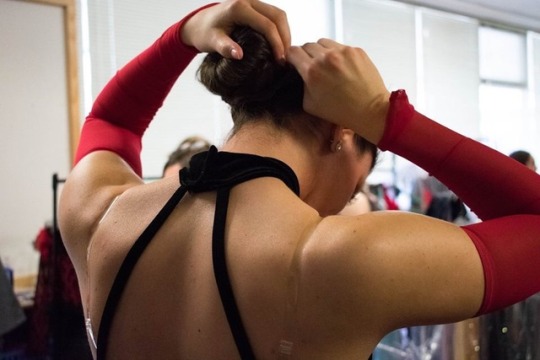
Project 3: Narrative
The life of dancer is extremely exciting and rewarding. With passion and dedication we poor our hearts onto the stage and we to tell our stories to the audience through movement. Our commitment to ourselves and to our team forms bonds of friendship that last a lifetime and a work ethic like no other. We are a family. These intimate moments capture our experience on and off stage together and the love we share for dance.
0 notes
Text
Project 2: Portraits
Hands
This series is my personal take on what a portrait can be. I believe that the hands are documents of our actions and the passing of time in the same way as wrinkles on a face. As an artist, my hands are my tools to create, they bare the actions of the labor that goes into my artwork. For these images I chose to photograph intimate moments in which people perform everyday ticks or unconscious movements of their hands. For my self portraits I captured the times when I crack my knuckles out of anxiousness, clench my head when I get tension headaches, and a moment of contemplation while I am trying to create. Everyone has their personal routines and habits we form along the way, such as playing with rings or running fingers through your hair. Its these actions that we find ourselves doing on a daily basis with our hands, that make us unique. Our hands record our lives. They capture time traced into the lines of our hands over time.
0 notes
Text
Art in the Age of the Internet, 1989 to Today
Review
Since the invention of the World Wide Web in 1989, it has been shaping our everyday lives. The internet has created a platform that has changed how we interact, date, see, and think. We are able to have immediate access to gain information, learn, exchange goods and ideas, and present our identity. The exhibition at the Institute of Contemporary Art called Art in the Age of Technology 1989 to Today, depicts how art in every medium reflects the way our culture has been influenced and transformed by technology.
The exhibition is comprised of sixty artists worldwide with over seventy works made in every medium from painting, sculpture, and photography to web based, virtual reality and performance. The show takes up the majority of the second floor and is organized into five thematic sections: Networking and Circulation, Hybrid Bodies, Virtual Worlds, States of Surveillance, and Performing the Self. These sections divide the works roughly by what subject matter is being influenced by technology but not limited to what medium they are using. It is important to understand that the show is not entirely made of screens and technology but rather about technology and its effects on our lives, relationships, politics, economy, and understanding of self. Basically, that although the overall theme is about technology, wires and screens do not need to be used to express the concerns surrounding it.
I particularly enjoyed the first room, Networking and Circulation. It had an assortment of different pieces that were concerned with the interconnection between people and technology. I gravitated toward the large scale painting by Laura Owens called Untitled. She combines the traditional techniques of painting and screen printing with the aesthetics of screen based mediums such as Photoshop. She incorporates cubist and constructivist qualities while at the same time integrating pixilation and compression that occurs in digital mediums. To me she is questioning the characteristic ideals of high quality images in today’s society. It shows how traditional techniques are lost in an age when you can easily perfect images with digital programs; the idea that everything must be filtered to become ideal. I thought it was complimented well being placed next to the video piece called Grosse Fatigue by Camille Henrot. This thirteen minute video projects multiple computer search windows that open, close, and overlap one another. The narrative combines different stories about the universe and the origins of life as well as the principle of fatigue, or loss of energy, that is essential to the function of the universe. It reflects the idea of technology being a constant burden that the overload of technology has had on life experience and the natural flow of life. I see these two works identifying how technology has taken over the traditional forms of life, the organic taken over by technological, the constant implication that the digital world has on reality.
We are hardly able to distant ourselves from being unconsciously submerged into internet culture, so we must step back to examine it. It is important to understand how technology infiltrates and alters our lives. The artists in this exhibit critically analyze the growing influence of the internet, social media, and technological advances on everyday life. The exhibit’s message is that the artwork is not necessarily made from technology but about technology. I would argue that although it is true that not all of the works use screens to confront the issues of the internet, it is almost impossible to talk about technology, whether positively or negatively, without in fact using it as a medium. We are in the age where these advances surround us and it is quite difficult to separate ourselves completely from its grasp. Our integration with technology is essential to making progress, the instant exchange of information, systems that saves lives, and worldwide communication are important to the betterment of society. But in contrast, our dependence is far too high. We rely on the internet to answer our questions, problem solve, communicate, and learn. We are losing the intimacy of social interaction face to face, there is no longer a need to do things on our own when a computer can calculate for us, and acquiring knowledge is only a google search away. Constant need for approval through social media, our reliance on the internet, and the influence it now has on every aspect of life can pose a threat to maintaining reality over the virtual world. It begs the question: How far is too far?
0 notes
Text
Persistence of Vision Nicholas Nixon
Review
Nicholas Nixon has been capturing the intimate moments of life as seen through the camera lens since the 1970’s. Using black and white film and primarily 8 x 10 – inch view camera, he has exposed the lies of his family, the ever changing landscape of Boston, as well as couples and people who may be sick or dying. The collection is organized around his project called The Brown Sisters, where he has photographed his wife and her three sisters every year since 1975. The photographs are displayed chronologically order along all four wall of the large open space and juxtaposed with other photographs of people and landscapes he took during those same years. The photographs stand as a document of these isolated moments, and support his philosophy that “The world is infinitely more interesting than any of my opinions about it.” Currently located on the Institute of Contemporary Art in Boston, this series called Persistence of Vision is a documentation of the sequential reality of life, an analysis on time, and the ability to enhance perception through the lens.
This beautiful display of The Brown Sisters encompasses the entire room of the gallery. The chronological orders has you follow the images from 1975 to today, forcing you to experience the passing of time as the photos have, symbolizing the journey through life. Each photograph is a beautiful reflection of the women as they age over time. Each detail is captured from one imagine to the next and you can physically see the long and short term changes to their bodies, their hair, their wrinkles, their smiles. These intimate details document life in the rawest form. It is easy to overlook changes that happen to us daily. Our actions impact our body immensely, but we may not realize it in the moment, it isn’t until we stop and look back that we see how much we have changed. These images give a more immediate recognition to how time and environment affects us.
Experiencing this exhibition has made me reflect more on my own life. It is incredible to see approximately forty- five years captured in just one room. It reminds me to live in the moment, move on from the bad, and embrace the good because life is short and you never know when it will end. The photographs by Nicholas Nixon are magnificent works of art. His ability to capture his vision through the lens translates with a profound quality and message that leaves you breathless.
0 notes
